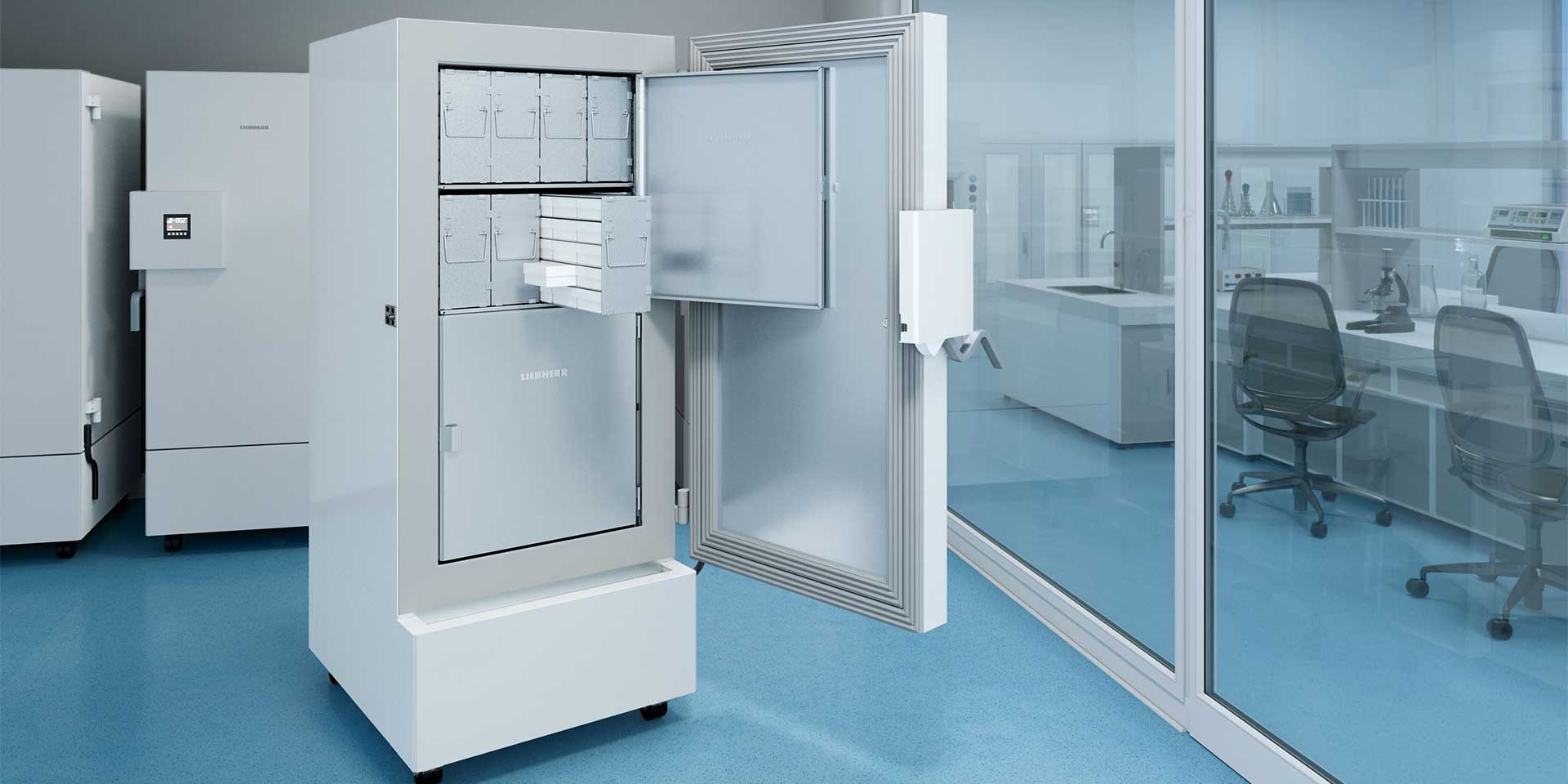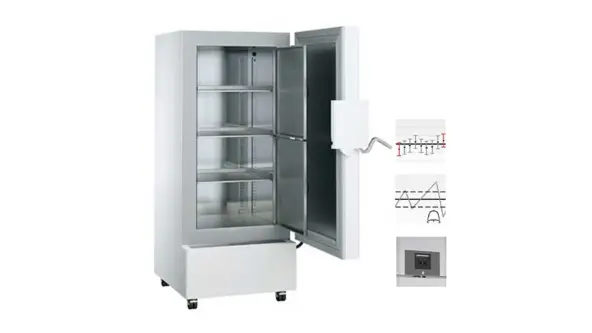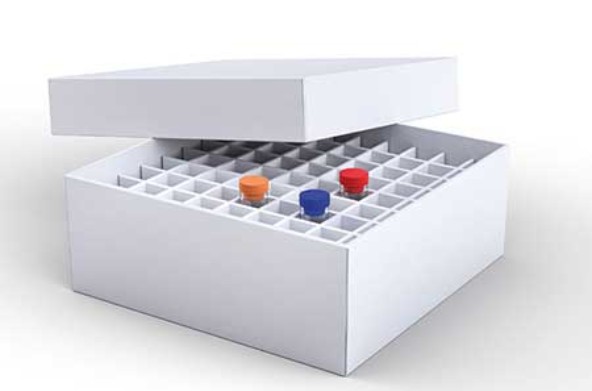
Liebherr has a suitable solution for every requirement
Vaccines cooling and storage
Vaccines are biological in origin and are usually sensitive to external influences. Heat and light, in particular, have a destabilising effect on the molecular structures, which is why vaccines usually have to be stored in a dark and cool place. A storage temperature of +2°C to +8°C is mandatory for most vaccines. Temperatures that are either too cold or too warm can adversely affect vaccines and impair their effectiveness. The storage temperature should therefore always be controlled.
Some new mRNA vaccines must even be stored at –20°C or at the ultra-cold temperatures of –70°C to –75°C.
What does mRNA stand for and how do mRNA vaccines work?
The acronym mRNA stands for messenger ribonucleic acid. The concept of using mRNA in vaccines is new. In contrast to other vaccines, it is not an attenuated or dead pathogen that is administered, but part of the genetic information of the virus in the form of mRNA. The body normally generates mRNA itself from copies of DNA segments to form proteins. The body cells of the vaccinated person form antigens from the information in the mRNA, which activate the human immune system. In the process, the mRNA does not enter the cell nucleus and, therefore, cannot change the DNA of the vaccinated person. After a relatively short time, mRNA is degraded by the body, but the body’s vaccination response remains intact. On contact with the pathogen, the immune system of a vaccinated person is then prepared and can protect itself against disease.
Laboratory appliances by Liebherr refrigerate vaccines reliably and safely
Special safety and hygiene regulations must be observed when storing vaccines that require cooling:
- Protect them from light and heat
- Ensure that the cold chain is maintained and avoid temperature fluctuations
- Check the temperature
- Prevent freezing or frost
- Ensure proper air circulation between the vaccines
In this regard, Liebherr has a range of laboratory appliances for cooling and storing highly sensitive substances that meet these requirements.
The majority of vaccines currently available can be divided into three categories in terms of their storage temperature requirements, and Liebherr has the right solution for each of these:
- −40°C to −86°C: Ultra-low temperature freezers
- −9°C to −30°C: Laboratory freezers
- −2°C to +16°C: Laboratory fridges

Liebherr ultra-low temperature freezers meet the highest safety requirements
Liebherr’s ultra-low temperature freezers provide ultra-low temperature refrigeration in a temperature range from –40°C to –86°C. They use the best safety mechanisms and the latest technology for low energy consumption:
- Minimal temperature fluctuations
The appliances have the least temperature fluctuations within a given space and over a given time. - Extensive monitoring system
If there are deviations in the interior temperature, if the door is not closed, or if there is a power failure, alarm signals as well as extensive temperature and alarm recording options reliably protect vaccines and samples. - Low energy consumption
Liebherr ultra-low temperature freezers are among the most economical models on the market worldwide. The excellent insulation of the vacuum panels and the efficient cooling system facilitate optimal energy saving and low operating costs.
Information on the storage of the Covid-19 vaccines from BioNTech and Pfizer
The new mRNA vaccine BNT162b2 is stored at temperatures between –70°C and –75°C. This temperature is optimal for long-term storage in laboratories. However, BioNTech has already announced that the vaccine will be delivered in dry ice boxes and can be kept cold in these boxes for 30 days. In vaccination centres and medical practices, the vaccine can be stored for up to five days in professional fridges at 2°C to 8°C.
Overview of Liebherr ultra-low temperature freezers | –40°C to –86°C
Why do the new mRNA vaccines need to be refrigerated at such low temperatures?
Some of the new mRNA vaccines are more sensitive to heat than other vaccines. Special lipids surround the mRNA. The lipids ensure that the mRNA gets to where it needs to go in the body. At very low temperatures, these lipids and lipid structures stop moving, so that the structure remains stable. At temperatures of –70°C, this state can be guaranteed for a long time. Therefore, some mRNA vaccines are stored at ultra-low temperatures.
Vaccine storage at −20°C
The American company Moderna has announced that its vaccine mRNA-1273 can be stored at –20°C for an extended period. At normal fridge temperatures, the vaccine should be able to be kept for 30 days. Different vaccines accordingly require very specific storage conditions.
Liebherr’s vaccine freezers are up to these challenges and can be adapted to individual temperature and safety requirements. Liebherr offers a wide range of vaccine freezers, which can even be adjusted from –9°C to –45°C depending on the application. The precise electronic controllers and integrated alarm systems ensure storage at an accurate temperature.

Most vaccines are stored at 2°C to 8°C
Vaccines containing antigens or attenuated pathogens are usually stored at temperatures between +2°C and +8°C, even long term. However, even here, special safety standards apply regarding the temperature. Many vaccines may not be frozen. A sharp drop or rise in temperature can damage vaccines. Another important point is the cold chain: Uninterrupted refrigeration between +2°C and +8°C must be ensured for live vaccines. Although inactivated vaccines must also be refrigerated, the cold chain may be interrupted here, for example, for short-term transport.
